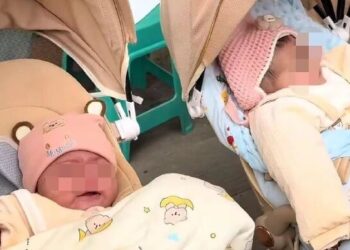
A 20-year-old international student, referred to as David (a pseudonym), recently captured media attention after surviving a sudden cardiac arrest during a class in Suzhou, thanks to timely and effective intervention. David was in Suzhou for a summer exchange program when the incident took place.
On the afternoon of August 12, around 4:30 PM, David suddenly collapsed during class. The instructor quickly dialed the emergency number, 120. Ye Bin, a staff member who heard the commotion, rushed to the scene and found that David had no pulse. Without hesitation, Ye retrieved an Automated External Defibrillator (AED) and started performing CPR.
Yang Xiaoping, a dispatcher from the Suzhou Emergency Center, received the emergency call and immediately sent an ambulance to the location. Yang also provided real-time guidance through a video call, instructing those on-site on how to perform CPR and use the AED. “From the video, it was evident that the patient was experiencing ‘agonal breathing,’ a clear sign of impending death. Continuous CPR was critical,” Yang explained.
Following Yang’s instructions, two individuals at the scene alternated in performing chest compressions. Dr. Zhou Jie, an ICU specialist at Suzhou Municipal Hospital’s Shantang Branch, also offered real-time guidance through the video call, urging, “Press harder! Don’t stop!” When the ambulance arrived, paramedics took over CPR, administered oxygen, and communicated with the Fourth Affiliated Hospital of Soochow University. David was transported to the hospital within 26 minutes of the initial emergency call, with continuous CPR being maintained throughout the journey.
“We prepared for his arrival with the ECMO (Extracorporeal Membrane Oxygenation) team on standby,” said Lu Fan, an attending physician in the Emergency Medicine Department at the Fourth Affiliated Hospital of Soochow University. When David was admitted, he was in a deep coma and had significant bleeding from his mouth and nose. After an additional seven minutes of CPR, his heart rate and pulse were restored, though he remained unconscious and was transferred to the ICU for further treatment.
Later that evening, a city-wide Multidisciplinary Team (MDT) of experts was assembled to discuss David’s condition. The following day, another consultation was held to investigate the cause of his cardiac arrest, involving further tests and online consultations with Professor Zhan Qingyuan, a critical care expert from China-Japan Friendship Hospital, under the guidance of Academician Wang Chen.
By August 15, David began to regain consciousness. On August 16, doctors started to wean him off the ventilator, and by August 17, after removing the endotracheal tube, David was able to communicate.
“The cause of cardiac arrest in someone as young as 20 is complex,” explained Guo Qiang, Vice President of the Fourth Affiliated Hospital of Soochow University. A multidisciplinary analysis, which included MRI and lab tests, revealed that David had developed encephalitis, which led to a secondary stroke due to vascular inflammation and blockage.
“This is the best outcome we could have hoped for. We are deeply grateful to everyone who helped our son,” said David’s parents, who had flown to Suzhou as soon as they heard about his condition. Overcome with emotion after seeing their son and learning about the efforts made to save him, they expressed their heartfelt thanks. “He’s alive today because of everyone here. We thank you all from the bottom of our hearts,” David’s father added.
Currently, aside from some minor motor impairment in his right arm, David is able to communicate and eat normally. “We hope he can make a full recovery as soon as possible. That’s our goal,” said Guo Qiang, expressing optimism about David’s rehabilitation.






